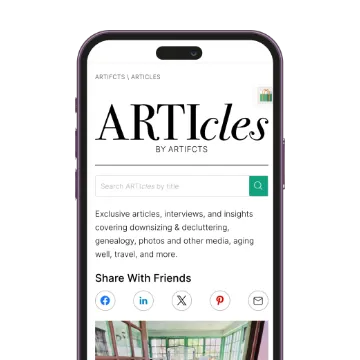Reading time: 5 minutes
I grew up in the same house. My first move was to college. Me and my minimalist tendencies, I would have been fine with a backpack of clothing and a laundry bin of bedding and essentials. My mother being the maximalist had different plans. Let’s just say I was the only freshman with a banana hanger.
Fast forward 20 something years. I’ve moved three times in as many years. And yet … it’s still not easy. The stuff doesn’t move itself. It requires planning, staging, boxing, moving, unpacking, and, in our case, a good dose of, “Mom, did you pack my [insert name of thing here]. I can’t find it.” Let’s just say if finding things post-move was a varsity sport, I would have lettered in it by now.
As a founder of a tech company dedicated to ‘stuff’ you’d think I’d have it figured out by now. I don’t. Each move for me is an opportunity to assess what worked and what didn’t, and to reassess what we have and why we have it. I still have my minimalist tendencies although I’ve swapped my maximalist mother for a super maximalist (and very sweet and sentimental) spouse.
So, what’s a girl to do? I’ve pulled together some tips based on what I wish I had known, and what I had wished I had done the first, second, and yes, third go-around.
-
-
- Hire a move manager. If you’re anything like me—trying to juggle work, kids, and aging in-laws—a move manager is key. You don’t need to be downsizing to work with your local NASMM partner. Contemplating a move? Call them, you won’t regret it. It takes the pressure off you and gives you a trusted, vetted, and expert resource to help you pre-, during, and post-move.
- Artifct fragile, valuable, or especially sentimental items before you pack. You never know what will happen during the move. Best to have the memory, photos, and details saved. In our case, moving an overly excited golden retriever can do as much if not more damage to cherished belongings than a dropped box in transit. And, if something happens to one of your valuable items, you can share the Artifct with your insurance agent to expedite the claims process!
- Artifct all other special items as you unpack. If you physically must unpack and put away every last item, Artifct the ones that mean something to you, and don’t forget to use the “In the future” field to note what you want to happen to the item in the future. Not only are you unpacking (yay!) you’re also creating a roadmap for your family of what to do with all your stuff one day down the road. It’s a win-win. (Added bonus: Use the “Location” field to note the item’s new location. It’s been a life saver in our house the past few weeks since our move.)
- As you unpack, set aside items you haven’t used in a year or items you completely forgot you own. Hold off putting them away until you ask yourself, "Do I really need this? Do I want this?" If you are limited in space and holding on to an item for purely sentimental reasons, consider Artifcting it and then donating or re-homing it. Moving can be a great time to embrace the art of Swedish Death Cleaning.
- Got children? You probably have their stuff too. Get them involved early and often. Giving them something to do helps you and them! You can check out our Pint-Sized Perspectives on Moving for more tips on moving with children. As for our older children, if you’re reading this, your stuff awaits you. You know what will happen to it if it remains unused or unclaimed for more than a year. Chop, chop!
- Worried about critical documents and sensitive ‘stuff,’ such as passports, tax returns, and the like? Skip the boxes and carry them with you.
- About those boxes. Serial mover? Think twice before trying to reuse old boxes, the integrity of which may have been weakened during the last move. Reusing boxes may also be prohibited by movers and insurance agents. Better to be safe than sorry and either use re-usable plastic bins (like we did for the last three moves!) or invest in new boxes to ensure your ‘stuff’ doesn’t get damaged in transit.
- Don’t forget to mark and position the boxes or bins that you need for immediate use in your new home. Nothing is worse than not being able to make a bed or take a shower after a long day of moving. Our daughter should know—she ended up in a sleeping bag for a day or two on move number two until we could locate her bedding.
- And just for laughs, don’t forget to turn off or redirect your auto-shipments. No sooner had we moved out of our last place than a 30 lb. bag of probiotic dog food arrived. I hope the new occupants saw the humor in that! We did; our golden retriever, not so much.
-

Have your own tried and true tips for moving? We’d love to hear from you! You can reach us at Editor@Artifcts.com.
###
© 2023 Artifcts, Inc. All Rights Reserved.










 Family history, Artifcted!
Family history, Artifcted!












